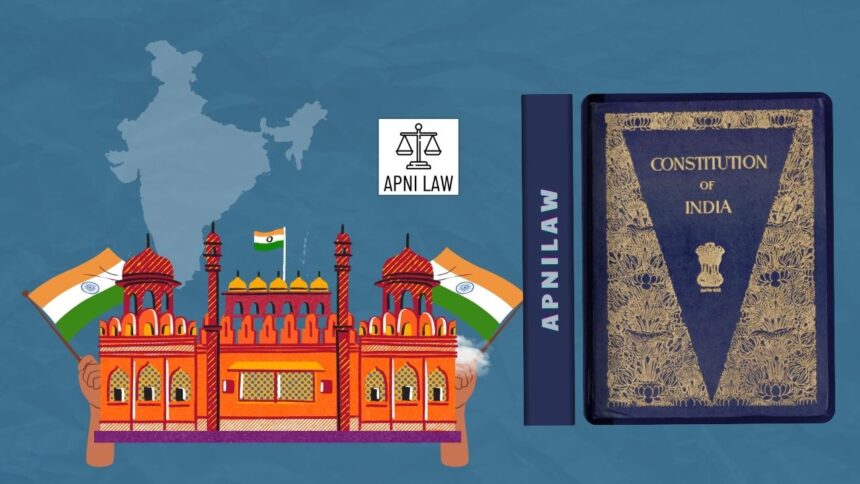What Are the Top 10 Landmark Judgments on Federalism in India?
Federalism is a system in India that allows the sharing of power between centre and state so neither of them are too strong. Federalism shapes the balance of power between the Union and the States in India. The Supreme Court has played a decisive role in defining this balance. Over the decades, landmark judgments have clarified constitutional boundaries, strengthened democratic accountability and protected states from arbitrary central interference. This rewritten article presents the top ten judgments on federalism in India in an SEO-optimised, active-voice, simple-sentence format. The analysis is enriched with authentic and updated constitutional insights. All paragraphs avoid bullet points and flow in clear short sentences while maintaining about 1200 words.
Why Is Kesavananda Bharati v. State of Kerala (1973) a Pillar of Federalism?
The Supreme Court delivered the Kesavananda Bharati judgment in 1973. It created the Basic Structure Doctrine. The Court held that Parliament cannot amend the basic structure of the Constitution. The judges recognised federalism as one of these essential features. This principle prevents Parliament from altering the federal balance in any extreme way. The Court also stressed the importance of limited government. It stated that separation of powers, judicial review, and distribution of powers form the core of constitutional stability. This case protects states from central overreach by treating federalism as an inviolable value. Scholars often describe it as the most influential constitutional ruling in India. It continues to guide judicial interpretation whenever federal issues arise.
How Did S.R. Bommai v. Union of India (1994) Strengthen State Autonomy?
The S.R. Bommai ruling transformed Centre-State relations. The Court examined the misuse of Article 356. It held that the President’s Proclamation of Emergency in a state is subject to judicial review. The judges insisted on a floor test to prove loss of majority. This requirement prevents arbitrary dismissal of state governments. The judgment emphasised secularism and democracy as structural norms. It also confirmed that federalism forms part of the basic structure. As a result, political stability in states improved. The case remains a benchmark against central misuse of constitutional powers.
What Principle Did Shamsher Singh v. State of Punjab (1974) Establish?
The Shamsher Singh judgment clarified the role of constitutional heads. The Court held that the Governor acts on the aid and advice of the state council of ministers. This principle restricts unilateral action by Governors. It protects democratic decision-making within the state. The judgment reinforces the federal idea that elected governments exercise executive power. It also limits the possibility of central influence through gubernatorial offices. Constitutional experts frequently cite this decision in disputes about gubernatorial discretion.
How Did the NCT of Delhi Cases (2018 and 2023) Define Asymmetric Federalism?
The Supreme Court delivered multiple rulings on the powers of Delhi’s elected government and the Lieutenant Governor. The Court clarified that Delhi’s executive authority lies with the elected government except in public order, police and land. The judges stated that the Lieutenant Governor cannot act as an obstructionist authority. The 2023 ruling further refined administrative control over services. These decisions highlight India’s asymmetric federal design. They show how certain Union Territories receive special powers and how these powers must operate within democratic limits. The cases strengthened cooperative governance and reduced conflict between the Centre and Delhi’s government.
What Did the Supreme Court Decide in the Article 370 Judgment (2023)?
The Supreme Court upheld the Union’s decision to abrogate Article 370. The Court held that Jammu and Kashmir did not enjoy sovereign federal status. It recognised that the state had asymmetric federal privileges but remained an integral part of the Union. The judgment explained that transitional provisions cannot freeze constitutional evolution. Although highly debated, it clarified the constitutional meaning of asymmetric federalism. It also addressed questions about legislative powers, reorganisation of states and federal restructuring. The judgment continues to influence discussions on regional autonomy and constitutional integration.
How Did Hargovind Pant v. Raghukul Tilak (1979) Define the Governor’s Office?
The Hargovind Pant ruling stated that the Governor’s office is an independent constitutional office. The Court held that the Governor is not a subordinate of the Union government. This recognition strengthens the institutional neutrality of the Governor. It also improves the balance between federal units. The ruling emphasised that the Governor must function within constitutional limits and not as an agent of the Centre. It remains relevant in modern debates about the misuse of gubernatorial powers.
Why Is Sat Pal v. State of Punjab (1969) Important for Understanding Indian Federalism?
In Sat Pal, the Supreme Court described India’s Constitution as quasi-federal. The Court observed that India combines federal and unitary features. The decision highlighted the strong central framework created by the Constitution. It explained that emergency provisions, unified judiciary, and integrated services reflect unitary strength. At the same time, it noted that the states enjoy constitutional status and legislative autonomy. This early characterisation shaped later debates on federal identity.
How Did the Punjab Termination of Agreements Act Case (2004) Address Federal Questions?
The Supreme Court examined a Punjab law that attempted to end water-sharing agreements with other states. The Court held that states cannot unilaterally violate inter-state agreements. The ruling protected cooperative federalism. It underscored the Union’s role in managing inter-state rivers under constitutional provisions. The case highlighted how disputes over natural resources test India’s federal machinery. It reminded states that constitutional federalism demands coordination and respect for national mechanisms.
What Federal Issues Did State of Karnataka v. Union of India (1977) Clarify?
The Court examined whether the Centre could inquire into the functioning of a state government. The Court held that the Union can conduct such inquiries under certain circumstances. The judges balanced central authority with state protections. They stressed that the Union cannot interfere with the internal autonomy of states without constitutional justification. This case clarified the boundaries of executive power. It continues to guide Centre-State relations, especially in matters of administrative oversight.
Why Does M. Siddiq v. Mahant Suresh Das (2019) Matter in Federal Discourse?
The Ayodhya dispute appeared mainly as a property and religious rights case. However, the judgment also touched upon constitutional authority and federal implications. The Court reviewed actions by various state governments over decades. It addressed land acquisition, administrative authority, and constitutional powers across states. The ruling highlighted how major disputes often involve layered federal responsibilities. Although not primarily about federalism, it influenced constitutional governance on a national scale. It remains one of the most significant decisions in India’s constitutional history.
How Do These Judgments Collectively Shape Federalism in India?
These judgments form the backbone of Indian federal jurisprudence. They protect democratic accountability at the state level. They prevent central abuse of constitutional mechanisms. They ensure power flows through elected institutions. They affirm that federalism forms part of the basic structure of the Constitution. They also recognise India’s unique model that blends strong central authority with state autonomy. The Supreme Court has acted as a guardian of this balance. It continues to evolve federal principles through judicial review and constitutional interpretation.
Why Do These Cases Matter for India’s Constitutional Future?
India’s political landscape keeps evolving. States demand more fiscal space. Regional parties seek political autonomy. National security and economic coordination require central involvement. Federal disputes test constitutional resilience. These landmark judgments offer a guiding framework. They preserve equilibrium between unity and diversity. They encourage cooperative and competitive federalism. They ensure constitutional boundaries remain clear even during political conflict. As India grows, these rulings will continue shaping the character of its federal democracy.








